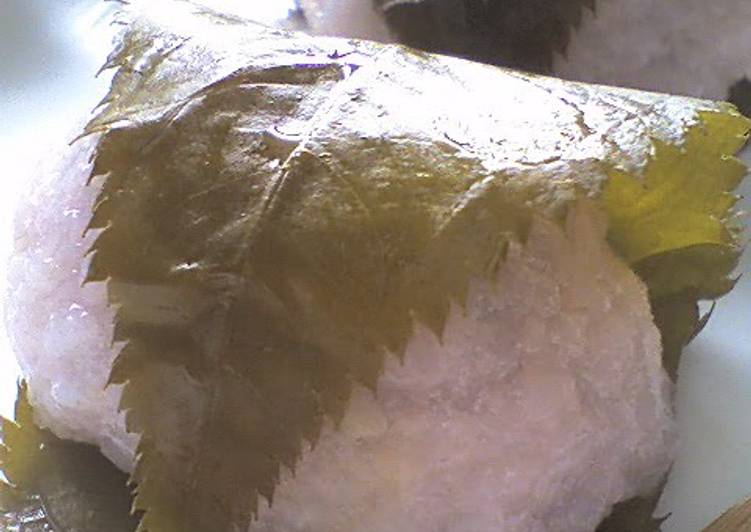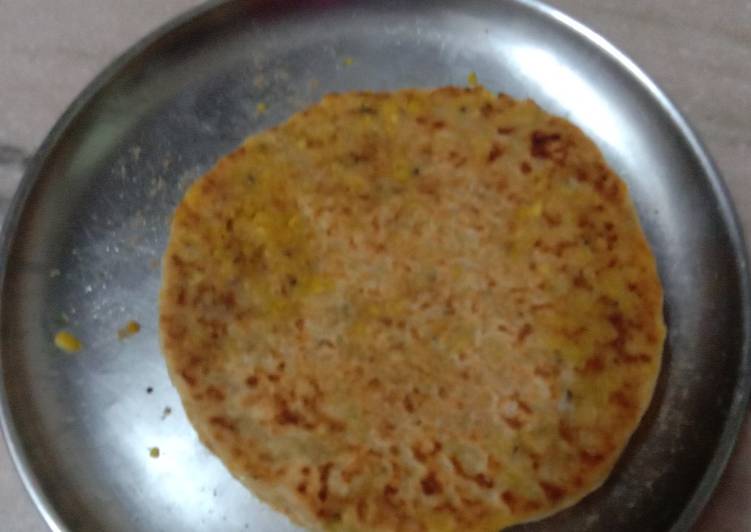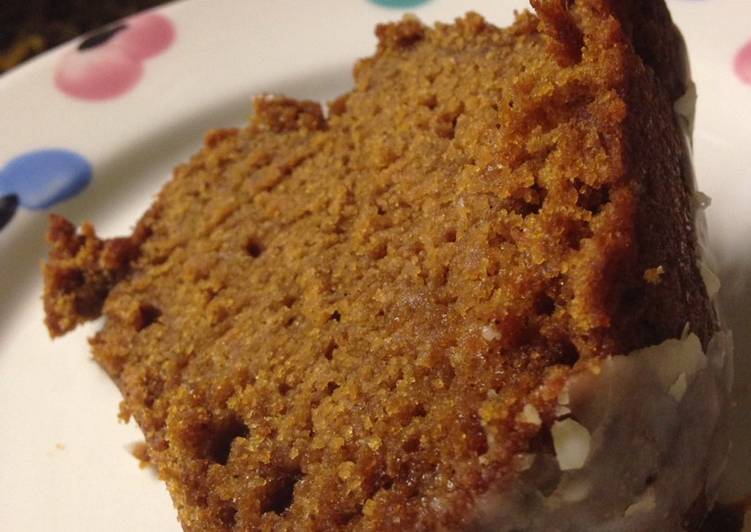
Hey everyone, it’s Jim, welcome to my recipe site. Today, I will show you a way to make a distinctive dish, easy sakura-mochi using a rice cooker. One of my favorites food recipes. This time, I will make it a bit tasty. This will be really delicious.
Great recipe for Easy Sakura-mochi using a Rice Cooker. This is my mum's way of making these. Take a tiny bit of the food colouring on the tip of a toothpick.
Easy Sakura-mochi using a Rice Cooker is one of the most well liked of recent trending meals in the world. It is appreciated by millions daily. It’s easy, it’s fast, it tastes yummy. They’re fine and they look wonderful. Easy Sakura-mochi using a Rice Cooker is something which I’ve loved my entire life.
To get started with this recipe, we must prepare a few components. You can cook easy sakura-mochi using a rice cooker using 6 ingredients and 11 steps. Here is how you cook that.
The ingredients needed to make Easy Sakura-mochi using a Rice Cooker:
- Get 700 grams Mochi rice
- Get 3 tbsp Sugar
- Prepare 1 enough to coat the tip of a toothpick Red food colouring
- Get 360 ml Water
- Prepare 20 Salted and preserved cherry leaves
- Take 300 grams Sweetened adzuki bean paste
I use Nishiki rice, which is easy to find and regarded as a high-quality rice. My Japanese friends say it's the best! As far as washing goes, I don't rinse this particular brand of rice. A lot of people are adamant about this, but the directions for Nishiki instruct you to combine.
Instructions to make Easy Sakura-mochi using a Rice Cooker:
- Rinse and clean the mochi rice well. Put it in a rice cooker. Fill the cooker with water up to the two-cup mark. Stir in a very tiny bit of red food colouring and 3 tablespoons of sugar. Let sit for about 30 minutes then cook the rice.
- Cook the rice on regular setting. Divide the anko into 20 portions and shape each into balls. Rinse the cherry leaves quickly and drain.
- After cooking the rice stir and roughly mash. Flatten the rice surface in the cooker and divide it into the desired number of sakura-mochi.
- Moisten your hands and wrap the portioned bean paste with the portioned rice. Wrap the rice with cherry leaves.
- Preparing the anko the previous day will make it easier to handle.
- [How to make anko] For moderately sweetened koshi-an: Ingredients: 250 g adzuki beans and 200 g sugar (the basic ratio is 1:1)
- Put 250 g of adzuki beans into a pressure cooker with twice the amount of water. Bring to a boil and drain over a colander to remove the bitterness.
- Return the beans to the pressure cooker with three-times the amount water and cook over high heat until the pressure gauge is raised. Reduce the heat to low and cook for 15 minutes. Turn off the heat and let sit until the pressure is released.
- Blitz the content of the pressure cooker in a food processor until smooth.
- Transfer the contents to a sauce pan and cook over a low heat to evaporate off the excess moisture. Turn off the heat when the texture is to your liking. It will stiffen once it cools.
- Tip for Step 1 Add the food colouring before adding the sugar. That way, if the colour is too strong, you can still add more mochi rice.
Since most rice cooker pots are nonstick, using the plastic rice paddle is recommended instead of any metal. May substitute chicken with other meat e.g. pork/beef. Stirring is important, to achieve smooth congee. NOTE: Usually when cooking congee with electric rice cooker, i need to click it 'on' a few times after it switched off (automatically) because congee has to simmer for some time to be smooth. I bought a rice cooker and wanted to use it for more than just rice.
So that’s going to wrap it up for this exceptional food easy sakura-mochi using a rice cooker recipe. Thank you very much for reading. I am confident that you can make this at home. There’s gonna be more interesting food at home recipes coming up. Remember to save this page in your browser, and share it to your loved ones, colleague and friends. Thank you for reading. Go on get cooking!


